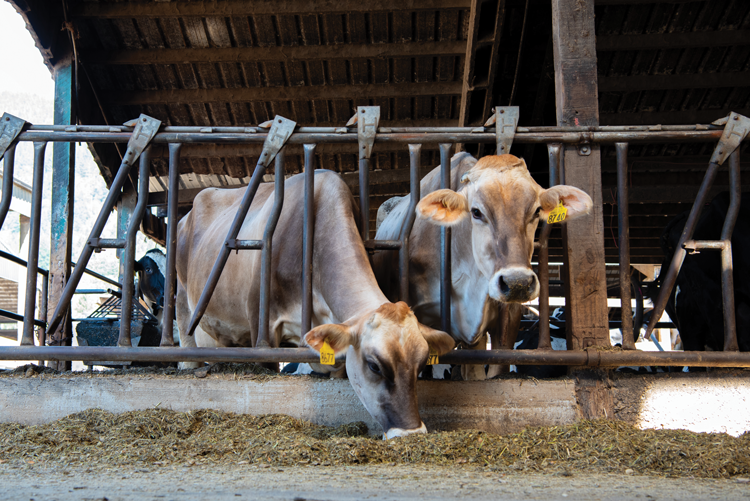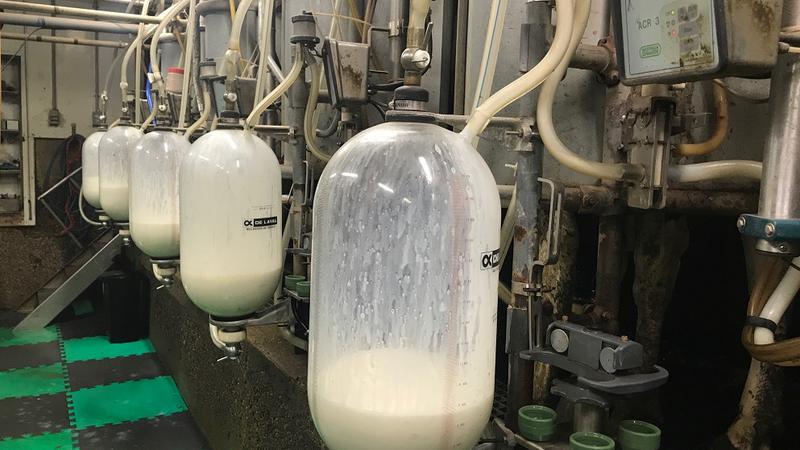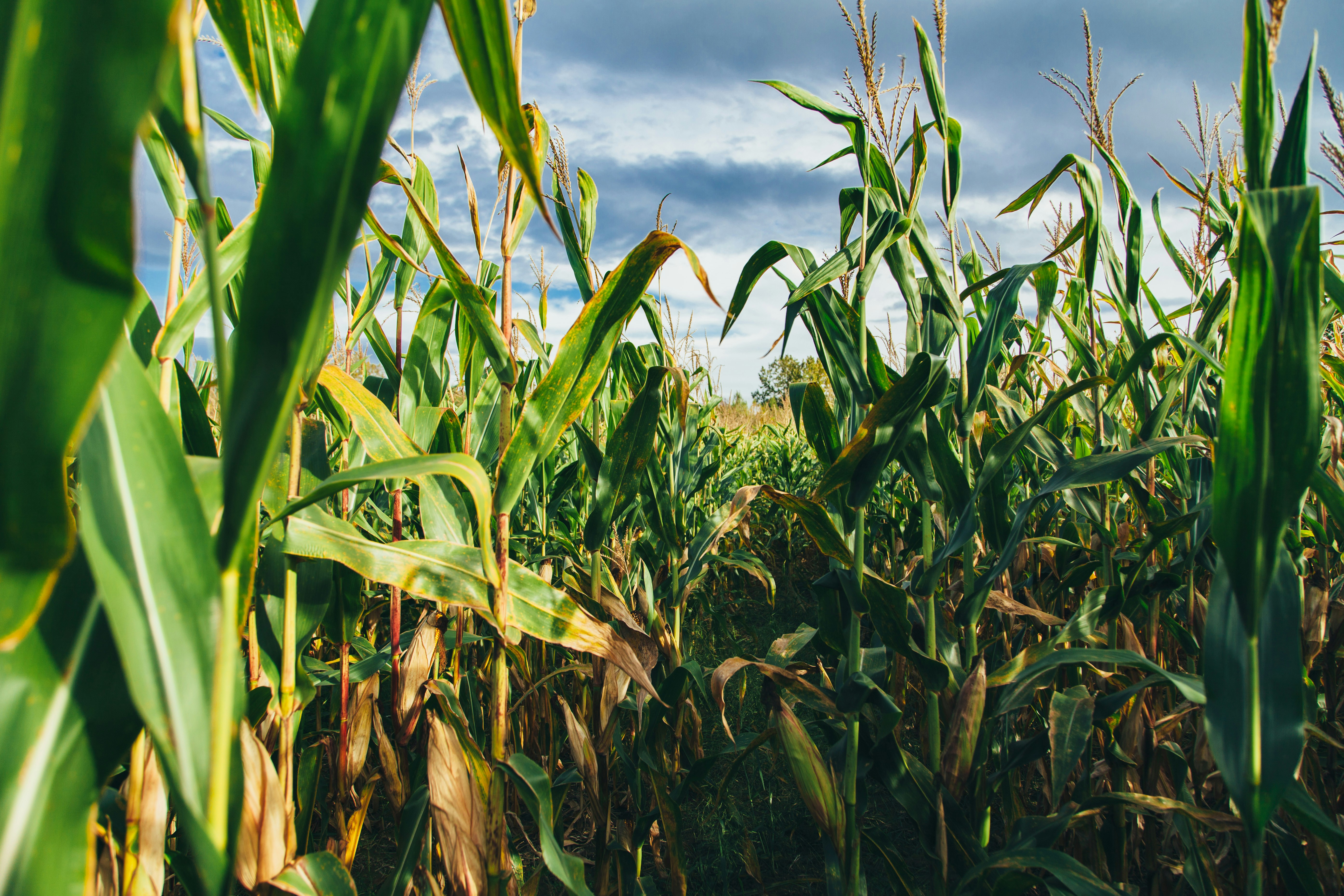There is no question which ration on a dairy receives the least attention. Often overlooked is the diet for the far-off dry cows. In the old days, we had to be sure that these vacationing cows weren’t simply put out of sight and out of mind where they could fend for themselves in some makeshift pasture or a drylot with a bale of free choice hay. Though we have come a long way since then, the far-off dry cow ration is still an important diet that needs adequate attention. The dry period is important for many physiological reasons, and saving too much money on what is probably already the least cost per pound of dry matter formulation on the dairy is risky business.
As with all rations, we want to aggressively manage cost and be sure the cows get what they need to recover and get ready for another lactation. In preparation for this article, I took a look at the nutrient requirements table in the back of the new NASEM nutrition guide to see how my recent formulations have compared to the updated official guidelines. I think the best way to describe my findings is to say that the far-off dry cows have few demands on our powerful nutrition formulation programs!
Focus on what’s needed
I have a suspicion that many far off dry cow rations may, in fact, be overformulated. When looking across the macromineral, trace mineral, and vitamin requirement rows, all are pretty modest with one exception. I expect many far-off dry cows are fed in excess for all of these micronutrients except vitamin E. The vitamin E level of 1,182 international units (IU) per day is a healthy amount. As you know, vitamin E has antioxidant properties and is broadly considered important in immunity and overall animal health. Recently dried-off cows certainly have had a stressful experience that can be problematic with the cessation of milking. And since vitamin E is fat-soluble, achieving high levels in the body in preparation for parturition is a good idea. So, check your Vitamin E levels and see where they are. You might need a bump.
The bad news is that vitamin E is one of the more expensive micronutrients. However, we should take care to not get too bothered about some additional investments if needed. This group of animals represents only around 15% of the total mature herd. It is possible that some other nutrients might be lowered, and you can reinvest that savings to help pay for at least some of the vitamin E. It is worth it.
Similar to pregnant heifers
What about energy and protein? It should be noted that these requirements are fairly close to those of pregnant heifers. Crude protein levels are in the 12% to 13% range with the protein quality needs somewhat higher for the heifers. This small extra amount won’t hurt the dry cows, and if sharing a ration simplifies the dairy, it could be a good fit. One note for both is a minimum rumen degradable protein (RDP) of 10%. This can be difficult to achieve in rations using distillers grain as the key protein supplier. Small amounts of urea can be added to assist here. This will cause crude protein levels to be elevated but with no negative impacts on the cows or the heifers. Many distillers-based dry cow and heifer diets are in excess of the crude protein requirement when meeting energy minimums in a diet heavy in low-quality roughages like straw or corn stalks.
Likewise, energy density needs are a bit higher for the heifers, but this energy can easily be acquired by a little extra intake that heifers always seem willing to eat. These diets tend to be around 60 net energy for lactation (NEL). Looking back at the vitamin E requirement for the dry cows, heifers will certainly be in excess of their requirement, and the cost increase here may suggest they have different minerals and rations to better target each. Each dairy can weigh the plusses and minuses of the potential convenience and the added cost. Based on my experience, you can have nice springers and healthy dry cows ready to enter the close-up pen when they share a ration.
At times, I see a farm use ionophores in heifer rations but not with far-off dry cows. The evidence and science would suggest an efficiency improvement when these are fed. As well, in our new sustainability-impacted environment, methane reduction can be achieved by feeding an ionophore. Just be sure to watch the level of the ionophore in each diet for the different classes of animals. Monensin is the ionophore of choice if far-off dry cows and pregnant heifers share either a mineral supplement or the total ration.
Variable options
Back in the “send them out to pasture” days, we were very negative on the forage quality that was often offered to dry cows. The funny thing is that now we love to feed these low-quality roughages to dry cows. Using wheat straw, corn stalks, grass hay, and some pretty “trashy” cotton by-products is perfect for these cows, but only as a part of a balanced diet.
Similarly, can low-cost, opportunity by-product ingredients be used? We must ask the same question about refusals. What these two ingredient types have in common is an inconsistent supply and probable variability in nutrient density and moisture content. Diets for far-off dry cows are a good place to take advantage of these lower-cost ingredients. Using the alternate ration function in your feeding software and including ingredients like wet brewers grain, wet beet pulp, various vegetable leftovers, and lactating ration refusals can save significant cost. These cows have solid, high roughage rations and healthy rumens that seem to go with the flow with careful ration changes based on variable supplies. This approach takes some effort and can be successful. The risk to be concerned about is an oversupply and potential overfeeding of these opportunity ingredients and having heavy, over-conditioned animals as a result.
When looking at far-off dry cow rations, we have many options. They are great places to save some feed cost by taking advantage of variable ingredients, and much care should be taken there. At the same time, these diets have an infinite number of successful formulations that can easily supply the needs of the dry cow. Take care to not overfeed energy and use a correctly formulated vitamin/mineral supplement that probably offers more vitamin E than you thought. Feeding dry cows correctly is a small detail that will pay dividends across the dairy, and saving too much money on this diet will likely come back and bite you.










